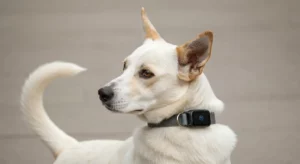A dramatic rise in the ownership of non-traditional pets—from fennec foxes and capybaras to savannah cats and rare reptiles—is sweeping across North America and Europe in 2025. Fueled by viral social media trends and the ease of online marketplaces, this surge in exotic pet ownership is prompting urgent debate among veterinarians, wildlife conservationists, and animal welfare advocates who question whether the desire for a unique companion is outpacing the public’s ability to provide proper care.
While the allure of an unusual animal is undeniable for some, experts are raising alarms about the significant challenges and ethical dilemmas involved. The trend is testing the limits of veterinary medicine, straining animal rescue resources, and blurring the lines between domestic pets and wild animals, leading to calls for stricter regulation and greater public education.
The Data Behind the Trend
The numbers paint a clear picture of a rapidly growing phenomenon. A landmark 2025 report from the Pet Industry Analysis Group (PIAG) reveals a 75% increase in household spending on non-traditional animal supplies over the past five years. The report, which surveyed over 3,000 households, indicates that the demand for what the industry terms “specialty exotic mammals and reptiles” is at an all-time high.
“We are seeing a definitive market shift,” explains Dr. Marcus Thorne, the lead analyst on the PIAG report. “While dogs and cats remain the dominant companion animals, the growth rate in the exotic sector is unprecedented. Our data shows that ‘uniqueness’ and ‘social media appeal’ are the top two drivers for first-time exotic pet owners under the age of 35.”
According to the report, the most sought-after exotic pets in 2025 include:
- Fennec Foxes: Prized for their large ears and small size.
- Capybaras: Popularized by viral videos showcasing their calm demeanor.
- Savannah Cats: A hybrid of a domestic cat and an African serval.
- Ball Pythons: Valued for their manageable size and docile nature.
- Sugar Gliders: Small marsupials that can glide through the air.
This boom is not without consequences. The same report found a parallel 60% increase in owner-surrenders of exotic animals to specialized shelters, with “unexpected behavioral issues” and “higher-than-anticipated care costs” cited as the primary reasons.
The Allure of the Unconventional: Drivers of the Trend
The Social Media Effect
Experts overwhelmingly point to social media platforms like TikTok and Instagram as the primary engine behind the trend. Videos of charismatic capybaras lounging in pools or fennec foxes playing like kittens can garner millions of views, creating a curated and often misleading portrait of what life with these animals is like.
“Social media creates a powerful illusion of domestication,” states Dr. Chloe Davis, a behavioral psychologist and author of The Digital Menagerie. “An influencer’s 30-second clip doesn’t show the complex dietary needs, the destructive nocturnal behaviors, or the specialized veterinary care required. Consumers see a cute, novel ‘product,’ not a wild animal with deeply ingrained instincts that are fundamentally unsuited for a typical home environment.”
The Online Marketplace
The accessibility of purchasing exotic animals online has significantly lowered the barrier to entry. A quick search can reveal numerous websites and social media groups where breeders, both legal and illicit, advertise animals for sale. This digital marketplace often operates in a legal gray area, with inconsistent regulations across different states and countries.
“The internet has become the wild west for the exotic animal trade,” warns Sarah Jenkins, Director of Advocacy at the Humane Society International. “It allows for impulse buys of complex animals without any screening of the potential owner’s knowledge, resources, or home environment. It’s a system that prioritizes profit over animal welfare.”
Expert Voices: A Spectrum of Concern
The rapid growth of exotic pet ownership has united experts from various fields in a shared sense of urgency, though their specific concerns highlight the multifaceted nature of the problem.
The Veterinary Perspective
For veterinarians, the trend presents a profound professional challenge. Most veterinary school curricula focus overwhelmingly on traditional pets like dogs, cats, and livestock. Specialized knowledge in exotic animal medicine is rare and requires extensive post-graduate training.
“The average clinic is simply not equipped to handle the unique physiology of a sugar glider or the specific environmental needs of a tegu lizard,” says Dr. Lena Petrova, a board-certified specialist at the Avian & Exotic Animal Medical Center. “We see tragic cases stemming from misinformation. An owner might feed a fennec fox a high-quality cat food, not realizing its critical need for taurine and specific insects, leading to metabolic bone disease or heart failure. These are not ‘small dogs with big ears’; they are a distinct species with complex requirements.”
Dr. Petrova notes that diagnostics are also a hurdle. “Establishing what’s ‘normal’ for a capybara’s bloodwork is far more challenging than for a golden retriever,” she adds. “This makes early disease detection difficult and treatment more expensive and less certain.”
The Wildlife Conservation Angle
Conservationists are concerned about the broader ecological impact. The demand for exotic pets can directly and indirectly fuel the illegal wildlife trade, a multi-billion dollar global industry that threatens biodiversity.
“Every time a savannah cat is legally sold, it can inadvertently legitimize the desire for wild-looking pets, potentially increasing demand for illegally poached servals or other wild cats,” explains Dr. Samuel Harding, a biologist with the Wildlife Conservation Fund. “The line between the legal breeder and the illegal poacher can become dangerously blurred in the consumer’s mind.”
Furthermore, there is the risk of escaped or released exotic pets becoming invasive species. The notorious case of Burmese pythons devastating the Florida Everglades, initially introduced through the pet trade, serves as a stark reminder of the potential ecological catastrophe.
The Animal Welfare Argument
At the heart of the debate is the welfare of the animals themselves. Welfare organizations argue that a domestic setting can never replicate the complex social and physical environment a wild animal needs to thrive.
“A cage, no matter how large, is a cage,” emphasizes Sarah Jenkins. “These animals are wired to roam, forage, climb, and interact with their own kind in ways we cannot facilitate in a living room. We see profound psychological stress, manifesting as repetitive behaviors like pacing, self-mutilation, and aggression. The ‘cute’ baby fox often grows into a territorial, anxious adult that the owner is completely unprepared to handle.”
The Legal and Regulatory Maze
Compounding the issue is a patchwork of inconsistent laws. In the United States, for example, regulations on exotic pet ownership vary drastically from state to state, and even county to county. Some states have comprehensive bans on certain species, while others have no restrictions at all.
“Enforcement is a massive challenge,” commented a U.S. Fish and Wildlife Service official, speaking on the condition of anonymity. “The interstate transport and online sale of these animals make it incredibly difficult to track and regulate. We need more standardized, federally-guided legislation that closes the loopholes exploited by irresponsible breeders and traffickers.”
The Owner’s Reality: Beyond the Instagram Post
For many who acquire an exotic pet, the dream quickly collides with a difficult reality. The financial burden can be immense, with specialized diets, custom enclosures, and rare veterinary visits costing thousands of dollars annually.
Maria Flores, founder of Kindred Spirits Exotic Rescue, a sanctuary that takes in surrendered animals, sees the fallout firsthand. “We get calls every week from people in tears,” she says. “They bought a baby coatimundi that was adorable, but now it’s an adult that rips apart their furniture, bites, and has complex social needs they can’t meet. They love the animal, but they are completely overwhelmed.”
Her sanctuary, like many others, is operating at full capacity. “There are far more exotic animals being bred and sold than there are homes—or sanctuaries—capable of caring for them for their entire lifespan, which can be 15 to 20 years. It’s a ticking time bomb.”
The Path Forward: Education and Responsible Regulation
As the trend of exotic pet ownership shows no sign of slowing, experts agree that a two-pronged approach is essential: robust public education and stronger, clearer regulations.
Advocacy groups are launching campaigns aimed at potential buyers, urging them to #ThinkBeforeYouBuy and research the full commitment required. They emphasize that while some experienced keepers can provide adequate care for certain species, the average person is ill-equipped for the challenge.
Simultaneously, there is a growing push for legislative action to prohibit the private ownership of species that pose a public safety risk or whose welfare needs cannot be met in a home environment. “The conversation needs to shift,” concludes Dr. Petrova. “It’s not about whether we can own these animals. It’s about whether we should. For the vast majority of these species, and for the people who try to care for them, the answer is increasingly clear.”
—












